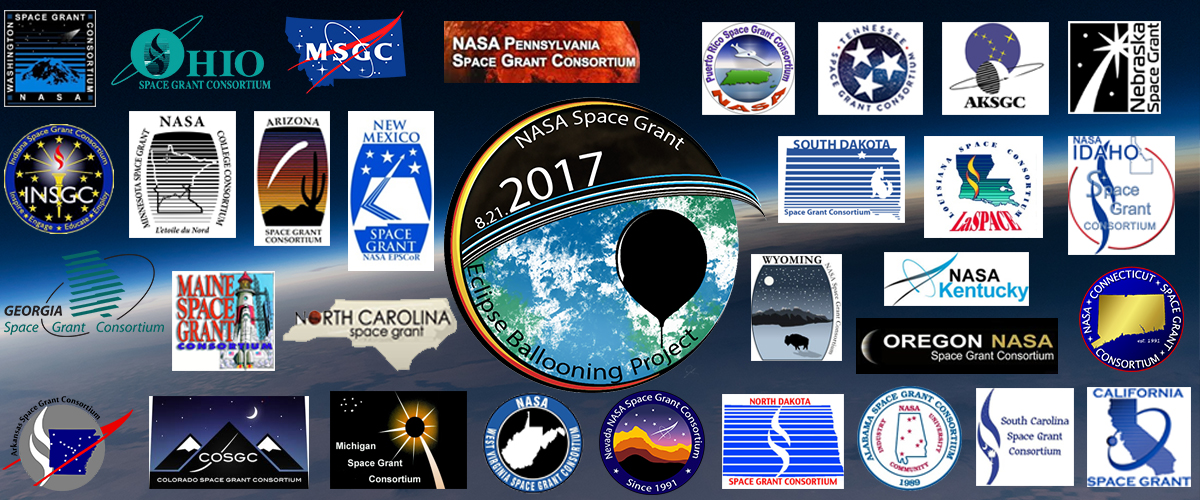In early 2014 we recognized that it was important to make the most of the natural momentum of the 2017 total solar eclipse. In the higher education realm, the National Space Grant Program was in a unique position to take on this responsibility. However, there was no nationwide structure in place to carry out a meaningful coordinated effort. Therefore, we designed the Eclipse Ballooning Project (EBP). The EBP combined existing Space Grant capabilities with cutting edge tools, resources, and communication to create a network of high altitude ballooning and radiosonde teams positioned along the path of totality. These teams focused on three major tasks: 1) capturing and streaming the first ever live video of an eclipse from the edge of space, 2) partnering with NASA Ames on the space biology experiment, and 3) conducting high-resolution atmospheric radiosonde measurements.
The EBP had four major goals:
- Conduct meaningful science experiments. The two primary science projects included the Atmospheric Science Project and the Space Biology Project (project development and science led by NASA Ames). In addition, individual teams conducted their own science and engineering experiments.
- Engage a wide audience. Total eclipses are rare and very impactful events. The EPB was in a unique position to engage the public in an awe-inspiring and educational way, right as the eclipse is happening.
- Engage the student participants in a meaningful, hands-on workforce development activity.
- Build long-lasting partnerships. With key partnerships, we could raise the bar in the academic high altitude ballooning community.
EBP’s major accomplishments are:
- First to provide live footage of a total solar eclipse from a space-like perspective
- First to fly a constellation of balloons across a continent
- Conducted balloon flights for two major scientific studies, one in partnership with NASA and one with NOAA
- Featured as part of NASA’s eclipse coverage, which reached 600 million people on TV platforms alone
- Project-specific media: hundreds of national and local stories with a pre-eclipse reach of 27 million
- Engaged 1,000 students on 63 teams from 32 states in an impactful hands-on activity
- All of our official teams had at least one eclipse day success story. Nearly every team successfully flew cameras and/or experiments on balloon(s) on eclipse day.
- Developed partnerships with every major ballooning entity in the USA including Google Loon and World View
- Award-winning model for future collaborations (inaugural National Space Grant Special Service Award and others)
Book chapter about the 2017 Eclilpse Ballooning Project.
Two sample video collections from 2017 below.

